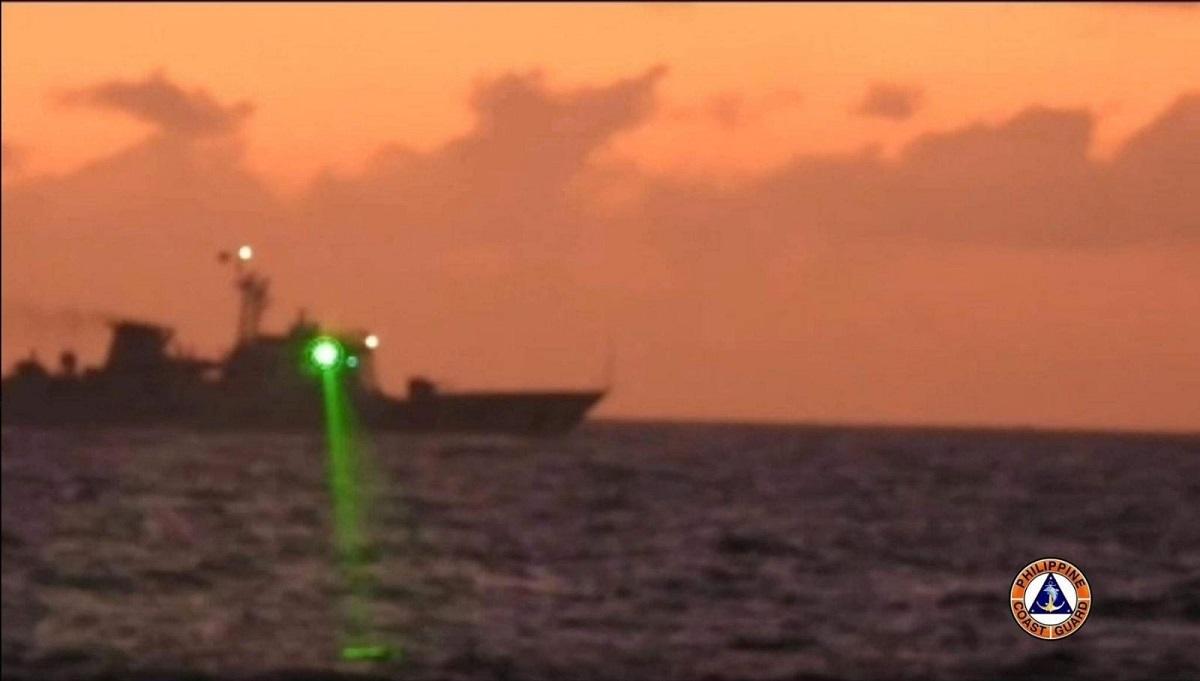US backs Philippines in laser dispute with China

The United States on Monday said it stood with the Philippines after Manila accused China's coast guard of using a laser to try to disrupt a resupply mission to troops in the South China Sea.
"The United States stands with our Philippine allies in the face of the People's Republic of China (PRC) Coast Guard's reported use of laser devices against the crew of a Philippine Coast Guard ship on February 6 in the South China Sea," State Department spokesperson Ned Price said in a statement.
"The PRC’s conduct was provocative and unsafe, resulting in the temporary blindness of the crewmembers of the BRP Malapascua and interfering with the Philippines’ lawful operations in and around Second Thomas Shoal. More broadly, the PRC’s dangerous operational behavior directly threatens regional peace and stability, infringes upon freedom of navigation in the South China Sea as guaranteed under international law, and undermines the rules-based international order," he added.
The US also said China has no legal claims to Ayungin Shoal (Second Thomas Shoal).
"As reflected in an international tribunal’s legally binding decision issued in July 2016, the People’s Republic of China has no lawful maritime claims to Second Thomas Shoal. The United States reiterates, pursuant to the 1982 Law of the Sea Convention, the 2016 arbitral decision is final and legally binding on the PRC and the Philippines, and we call upon the PRC to abide by the ruling," Price said.
A 1951 defense pact between Manila and Washington binds the two allies to come to each other’s aid from aggression and help defend the other party.
"The United States stands with our Philippine allies in upholding the rules-based international maritime order and reaffirms an armed attack on Philippine armed forces, public vessels, or aircraft, including those of the Coast Guard in the South China Sea, would invoke U.S. mutual defense commitments under Article IV of the 1951 U.S. Philippines Mutual Defense Treaty," Price said.
The Philippine Coast Guard (PCG) earlier said the incident took place on February 6 near Ayungin Shoal, which China calls Ren'ai Reef.
The PCG on Monday accused a Chinese coast guard (CCG) vessel with bow number 5205 of pointing a "military-grade" laser light at PCG vessel BRP Malapascua which was on a military rotation and resupply mission in Ayungin Shoal in the West Philippine Sea.
China's foreign ministry said its coast guard conducted actions according to the law.
China Foreign Ministry spokesperson Wang Wenbin on Monday said the PCG vessel "intruded into the waters off the Ren'ai Reef without Chinese permission."
Wang maintained that Ren'ai Reef is part of China's Nansha Islands or what the Philippines refers to as Spratly Islands.
The Armed Forces of the Philippines (AFP) on the other hand on Monday called on the Chinese government to control its forces after the incident.
“The Secretary of National Defense has already declared or said that the act committed by the Coast Guard of China is offensive and unsafe,” AFP spokesperson Colonel Medel Aguilar told reporters.
“Therefore, I think it is time for the Chinese government to restrain its forces so that it does not commit any provocative act that will endanger [the] lives of people,” he added.
A Philippine Naval vessel – the BRP Sierra Madre – has been grounded at Ayungin Shoal since 1999. The ship manned by more than a dozen Marines and sailors has become a symbol of Philippine sovereignty in the offshore territory.
It is 105.77 nautical miles from the nearest Philippine province of Palawan and constitutes part of the country’s 200-nautical mile continental shelf as provided under the United Nations Convention on the Law of the Sea.
In 2013, the Philippines challenged China’s legal basis for its vast claim in the South China Sea before the Permanent Court of Arbitration in The Hague, Netherlands. Manila won the case in a landmark award in 2016 after the tribunal invalidated Beijing’s assertions.
China has ignored and belittled the ruling, maintaining “indisputable” and “historical” claim over nearly the entire waters even as it encroaches on the territories of its smaller neighbors like the Philippines.
For years, the Philippines, China, Vietnam, Malaysia, Brunei, Taiwan, and China have been locked in territorial disputes in the South China Sea, a vital sea lane where oil and natural gas have been discovered.
China has since beefed up its reclamation activities in other disputed areas and transformed previously submerged features into artificial islands with multi-level buildings and runways. It has also installed surface-to-air missiles in these areas, triggering concerns from countries, such as the US, Japan and Australia. —Reuters/with a report from Michaela Del Callar/KG, GMA Integrated News




